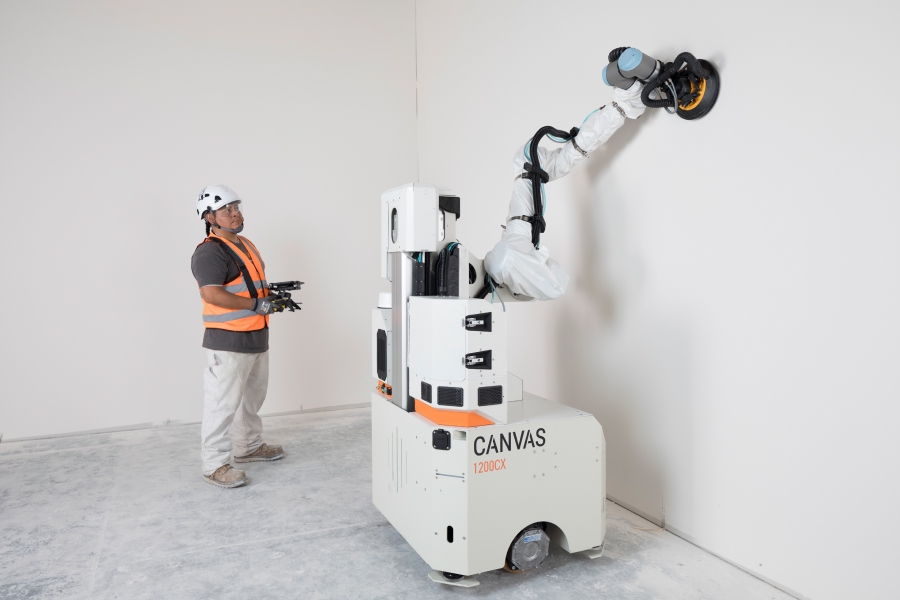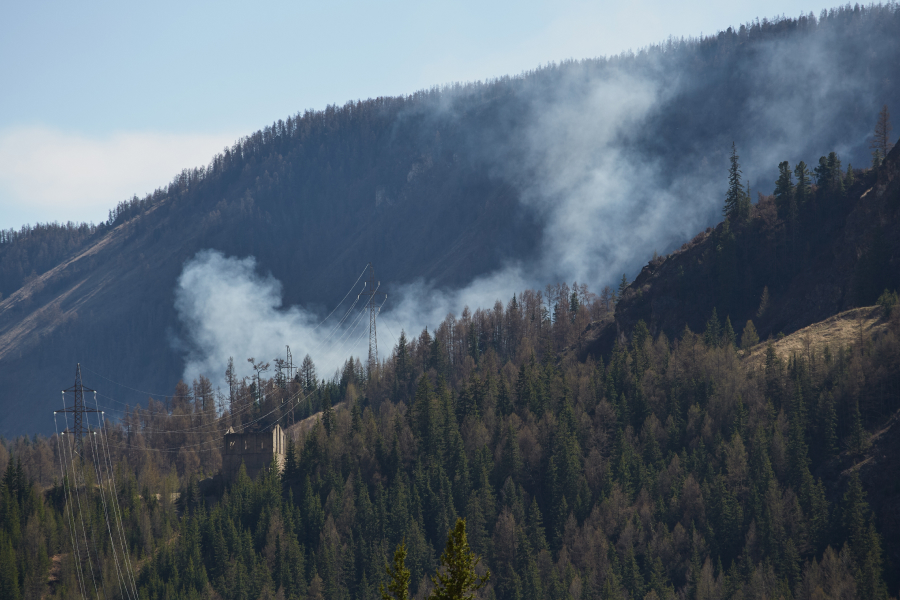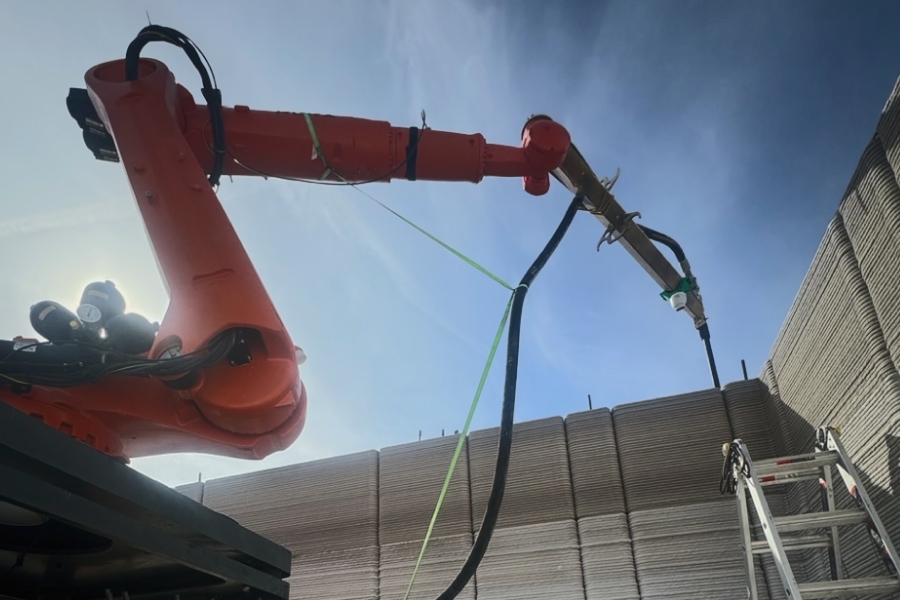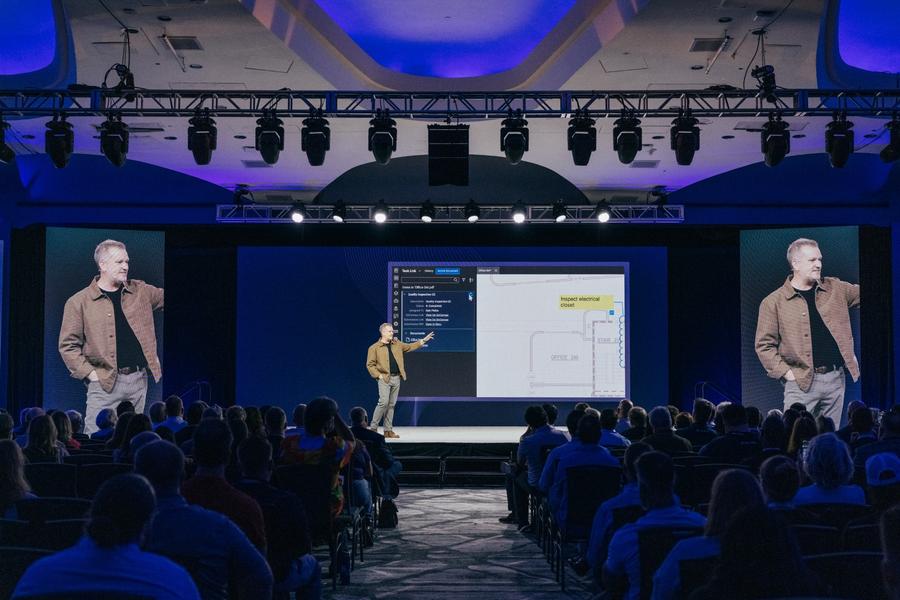Drywall is one of those trades most people take for granted. It’s everywhere—offices, homes, hospitals, classrooms—and yet the process behind it is tough, repetitive and hard to staff. It hasn’t changed much in more than 100 years.
Until now.
Canvas, a Bay Area startup, has built a robot that can finish drywall with speed and consistency most crews can only dream about. It tapes, muds and sands with minimal setup. No plans. No scanning. Just show up and go. And with more than 7,000 robots expected to join the construction workforce by year’s end, it’s not an outlier but a sign of what’s coming.
“I believe that machines give us superpowers,” said Kevin Albert, co-founder and CEO of Canvas. “If you think about a car or an airplane or a backhoe, it allows people to do things that we otherwise couldn’t do just by ourselves or with our hands.”
Albert isn’t new to automation. Before starting Canvas, he helped build military robots at Boston Dynamics. But the lightbulb moment came when he remembered what it was like doing construction jobs during college—digging holes, demoing walls and waking up with his hands locked in the shape of a sledgehammer.
The Jobsite Gap No One Was Solving
The team at Canvas noticed something strange. Exterior work in construction had been transformed by heavy machinery. But interior work?
“If you go to the interior spaces, it’s all entirely hand tools,” Albert said.
That mismatch got him thinking. If a robot could be made mobile and precise enough, it could fill the gap without needing to change the entire workflow. The question was where to start.
Canvas chose drywall finishing for a few reasons. One, it’s a scheduling pain. Crews often lose money on the finish and make it back on framing. Two, it’s one of the hardest trades to hire for. Three, it doesn’t touch code.
“The finish is an aesthetic part of the job,” Albert explained. “It doesn’t touch code and it’s infinitely fixable. So, it’s kind of a perfect area to get started when you want to introduce new things into the industry.”
How the Robot Works on the Jobsite
The process is simple. Once seams are fire-taped, a worker brings the robot to the wall, plugs in dimensions and lets the machine handle the rest. Using onboard AI and vision, the robot maps the surface, finds the seams and applies a single pass engineered profile of compound.
“We don’t need any plans,” Albert said. “We don’t need any kind of pre-made maps or any scanning to the site.”
Once the compound dries, the machine’s sprayer head is swapped out for a vacuum-capped sander. It re-maps the wall, detects the seams again and sands them flush.
Compared to the standard three-day manual process for a level four finish, Canvas finishes walls in a fraction of the time. That pays off in tighter schedules, fewer overruns and better flow between trades.
“It helps with schedule control,” Albert said. “It helps with flexibility. It helps make sure there’s flow from the schedule so that you don’t have the risk of overruns.”
From Four Years to Four Months
One of Canvas’ biggest benefits isn’t speed. It’s training time.
A traditional apprentice takes about four years to learn consistent finish work. With Canvas, a crew can be fully trained and producing high-quality results in four months. Workers get up to speed in about a week, and Canvas provides ongoing support and training to keep quality consistent.
“You can get a team producing good quality in four months, as opposed to four years of muscle memory that you have to create with troweling,” Albert said.
It’s a big deal for contractors struggling to find experienced finishers. And it lowers risk, too. The robot handles high or awkward areas that often lead to injuries.
“If you’re sending the machine up to high spaces, that means you don’t always have to send people up,” he added.
Built With Labor, Not Against It
Canvas didn’t build the robot in a lab and toss it into the field. From the start, the team worked closely with the International Union of Painters and Allied Trades (IUPAT). Development and testing took place inside the union’s own training facility.
“Unions are looking for their workforce to be the most capable workforce in the world that can guarantee that buildings get done on time and have the best quality,” Albert said. “Therefore, they need the best tools in the industry. That just fit very well with what we’re trying to enable them to do.”
This partnership helped Canvas build trust early and ensure the tool met field needs. It also helped counter the usual fear that robots are coming to replace humans. Canvas is making the opposite case.
“The machine enables our customers to be able to produce good quality with the shrinking labor force,” Albert said, “and to actually do more work with the great workforce that they have.”
A Model for Where Construction Tech Is Headed
Canvas started with drywall, but the implications go further. Its approach—solve a real field problem, work with labor, build for jobsite reality—sets a tone that the industry needs more of.
This isn’t a moonshot. It’s a power tool with smarts. Something that helps the people who build do it safer, faster and better.
And it doesn’t need a blueprint to know where to go next.











